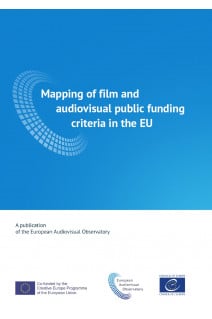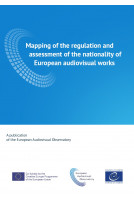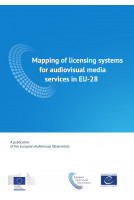Foreword Acknowledgements 1. Executive Summary2. Setting the scene
2.1. Funding body population, income and spend
2.2. EU legislative framework
3. Scope and methodology
3.1. Data and information gathering
3.2. Time scope
3.3. Geographical scope
3.4. Types of work
3.5. Questionnaire and factsheets
3.6. The matrix
3.7. Comparative analysis and case studies
4. Comparative analysis
4.1. Definition of culture and cultural criteria
4.1.1. Cultural profile
4.1.2. Cultural test
4.2. Nationality and establishment
4.2.1. Criteria related to the nationality or establishment of natural persons
4.2.2. Criteria related to the country/region of establishment of legal persons
4.3. Theatrical release, broadcasting and visibility on VOD
4.4. Theatrical performance and performance at festivals
4.5. Budget
4.6. Awarded amount
4.6.1. Aid intensity rules
4.6.2. Maximum awarded amount
4.6.3. Selective vs. automatic support
4.6.4. Repayable vs. non-repayable schemes
4.6.5. Eligible costs
4.7. Territorial spending and shooting criteria
4.7.1. Territorial spending criteria
4.7.2. Territorial shooting criteria
4.8. Nationality of talent, cast and crew, underlying copyrights
4.8.1. Nationality of the talent, cast, crew
4.8.2. Underlying copyrights
4.9. Language, minorities and gender
4.9.1. Shooting language and script language
4.9.2. Linguistic minorities
4.9.3. Ethnic, social and religious diversity
4.9.4. Gender
5. Case studies
5.1. Case study: The effect of regional funding
5.1.1. Introduction
5.1.2. Territorial spending obligations
5.1.3. Shooting in the region
5.1.4. Cultural link to the region
5.1.5. An example: Medienboard Berlin-Brandenburg (MBB)
5.1.6. An example: Fondo Audiovisivo Friuli Venezia Giulia
5.2. Case study: Off-screen Gender Equality and Film Funding
5.2.1. State of play and legal framework
5.2.2. Measures implemented by film and audiovisual funds
5.3. Case study: Green production
5.3.1. Introduction
5.3.2. Sustainability at the VAF
5.4. Case study: SFI measuring of film performance
5.4.1. The indicators
5.4.2. Measuring the results
5.4.3. Aggregated results
5.4.4. New approaches
5.5. Case study: Multiparty collaboration in the field of film and audiovisual funding
5.5.1. Introduction
5.5.2. International funds
5.5.3. Multinational schemes
6. Conclusions
6.1. National vs. regional
6.2. European legislative framework
6.3. Axes of analysis
6.4. Visibility and performance
6.5. Looking ahead
7. National factsheets
7.1. AT – Austria – National Summary
7.2. BE – Belgium – National Summary
7.3. BG – Bulgaria– National Summary
7.4. CY – Cyprus – National Summary
7.5. CZ – Czech Republic – National Summary
7.6. DE – Germany – National Summary
7.7. DK – Denmark – National Summary
7.8. EE – Estonia – National Summary
7.9. ES – Spain – National Summary
7.10. FI – Finland – National Summary
7.11. FR – France – National Summary
7.12. GB – United Kingdom – National Summary
7.13. GR – Greece – National Summary
7.14. HR – Croatia – National Summary
7.15. HU – Hungary – National Summary
7.16. IE – Ireland – National Summary
7.17. IT – Italy – National Summary
7.18. LT – Lithuania – National Summary
7.19. LU – Luxembourg – National Summary
7.20. LV – Latvia – National Summary
7.21. MT – Malta – National Summary
7.22. NL – Netherlands – National Summary
7.23. PL – Poland – National Summary
7.24. PT – Portugal – National Summary
7.25. RO – Romania – National Summary
7.26. SE – Sweden – National Summary
7.27. SI – Slovenia – National Summary
7.28. SK – Slovakia – National Summary
8. Glossary






